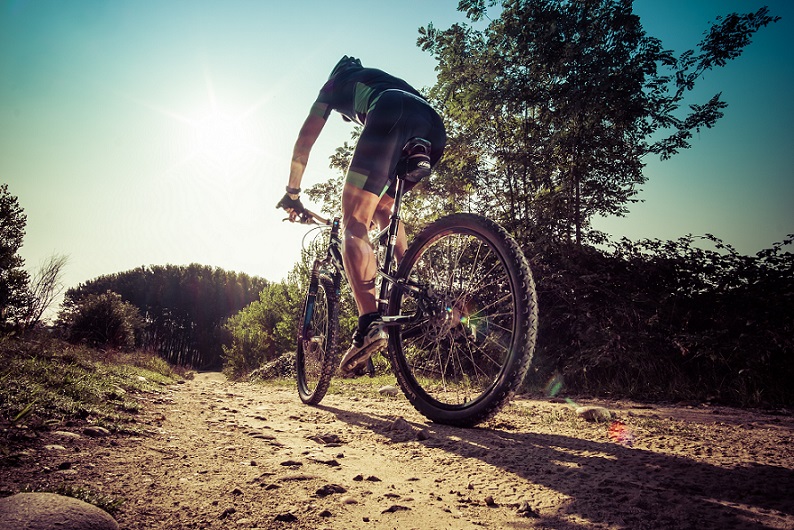
Choosing the right bike can be a difficult and time-consuming process. While there are a myriad of things to consider before you buy a bike there are also a multitude of things to consider post purchase so you want to ensure sure you make the right choice in the first instance.
We’re here to make this whole process a lot easier for you!
In this article you will find everything you need to consider pre and post purchase such as how to find the best bike within your budget, whether you should buy new or used, what type of bike will be best for your needs, what frame material to choose, how to take care of your bicycle after you buy and much more.
Here’s why it’s important to understand the details before you buy
It will come as no surprise that choosing the right bike for your needs is vital to your enjoyment when cycling. Having the right bike for your purpose and body measurements will be the difference between having a bike that gets ridden every day versus one that is collecting dust at the back of your garage. There are many things to be aware of when choosing your next bike so we have put together this guide to help you avoid common mistakes and get the best bike for your needs and budget.
Let’s go through it in 7 steps.
1. Determine how you will use your bike for maximum enjoyment
Before you commit to buying a bike, it’s important to determine what type of riding you’ll be doing. Are you looking for speed? Do you want to join a group? Will you mainly ride on sealed roads or do you want to race through forest trails and rugged terrain? Are you planning on longer or shorter commutes? Do you want to be able to attach a basket, rack, child seat or panniers to your bicycle? Are you looking to compete in events such as road racing or triathlons?
If you know your answers to these questions you’ll be able to use the bicycle type descriptions we outline later in this article to help you narrow down your choices.
2. Finding your bike size is crucial
Knowing your bike size is essential to getting the right product. Having the wrong size bicycle will not only make for an uncomfortable ride, it can also lead to injury. There are a few steps to finding your bike size which is why we have put together this bike sizing guide to help you find your size in three easy steps.
If you’re buying from your local bike shop, they will be able to measure your height, inseam length and flexibility and pair you with the right bicycle from their range. They should also help you with a bike fit, taking into account saddle position, handlebars and cleat positioning (if required). If they don’t seem to pay particular attention to fitting your bike then make sure to ask for it. Your comfort depends on it.
3. Getting the most out of your budget
Choosing how much to spend on a new bike will come down to your own personal circumstances, however there are a few pieces of advice which can help you make the most of your money:
- Don’t go too cheap – generally you get what you pay for when it comes to bikes. As a general rule, new bikes below $500 often have cheap components which will wear down quickly.
- Remember to budget for the cost of accessories such as lights, mudguards, helmets, shoes, cleats and anything else you might need.
- Compare new and second hand bikes to get an idea of what you can get for your money.
- Use Bike Chaser to browse products available in your local area so you know what’s out there.
4. Deciding whether to buy a new or used bicycle
There are a few factors to consider if you’re tossing up buying a new or second hand bike. Below we consider some of the advantages and disadvantages of buying new vs. used bikes.
Buying new
Going to your local bike shop and browsing the long rows of shiny new toys is bound to get anyone excited, young or old.
One of the real advantages of buying a bicycle from new is the help you can get from the bike store staff. Knowing what type, model, size, material and price range to go for can be challenging even for more experienced cyclists. A great bike shop will give you the right advice pre and post buying, along with a bike fit and ongoing service.
Any larger retail purchase like this also comes with a warranty which means you can get any pre-existing issues fixed at no extra cost.
Our recommendation is to always buy your new bicycle from a local bike shop rather than an online store or a generic discount store. A bicycle should be trialled and fitted to your measurement before you buy which is hard to do online or in a generic department store. On Bike Chaser you can browse and enquire about the products of bike stores in your area and finalise the purchase in-store.
Buying new – pros
- It’s new! It’s your bike that no one else has used and abused.
- You can change accessories and components if you want to upgrade to better wheels or tyres or add mudguards, racks or other accessories to your bicycle. Often you can negotiate a good price when you’re buying a few things at once.
- A shop warranty comes with buying a new product in a retail store. So does a general bike fit in most cases (if not, you should ask for it).
- Bike shop advice can save you a lot of money and hassle later on. Make sure it’s good advice though (more on that later).
- Potential free service from the bike shop – at least the first service. Ask your local bike shop whether they offer free 1st services for new sales.
Buying new – cons
- Buying new is usually more expensive than buying used.
- You may not need a brand new bike for your purposes.
Buying used
The main reason for buying a used bicycle is lower cost. Buying a used bicycle can be highly advantageous if you’re not after the newest season of products. In fact, it is often possible to score a real bargain because someone else is trying to declutter, move house or simply because last year’s model is now so last year.
When buying used, always take the bike for a decent test ride to verify that it works as intended and inspect all components to make sure everything is intact.
A used bike may be less desirable to bike thieves and you may also feel less robbed if theft does occur. If you’re going to leave your bicycle in public places such as train stations, universities or on street corners, you might want to opt for a bike that works like a charm but is less desirable to thieves, i.e. a quality used bicycle. An ugly bike combined with a decent bike lock can be really effective theft prevention!
Of course there are also pitfalls to be aware of such as buying damaged or stolen products which may cause you grief later on. Organisations such as Australian Bike Vault or National Bike Register do a fantastic job of registering new bicycles and reporting and recovering stolen units. Always check these sites before buying used, to see if you’re buying a stolen bike.
Specialised high-end used bicycle stores like Alchemy Cycle Trader are another great option for buying used. With a shop floor full of spruced-up second-hand items, you know you’re getting products that are well maintained and safe to use, at a good price.
Buying used – pros
- It’s generally cheaper than buying from new.
- You can get a bargain if you find a seller who wants a quick sale without too much hassle.
- Second-hand bike stores are an option if you’re concerned about buying from private sellers.
- Used bikes may be less desirable to thieves – this of course is highly dependent on the condition and type of bike.
Buying used – cons
- No warranty is given by the seller. You bought it as is, warts and all.
- It may be difficult to spot issues with the bike such as cracks in the frame or other well-hidden damage.
- It may be stolen – lots of stolen bikes end up on the internet and you could end up with someone else’s cherished possession if you don’t take precautions.
5. Understanding the different types of bicycles
Road bikes are the most commonly sold bike type in Australia but that doesn’t mean a road bike will be the right choice for your needs. Below is a description of the most common types of bikes along with their pros and cons.
Road bikes 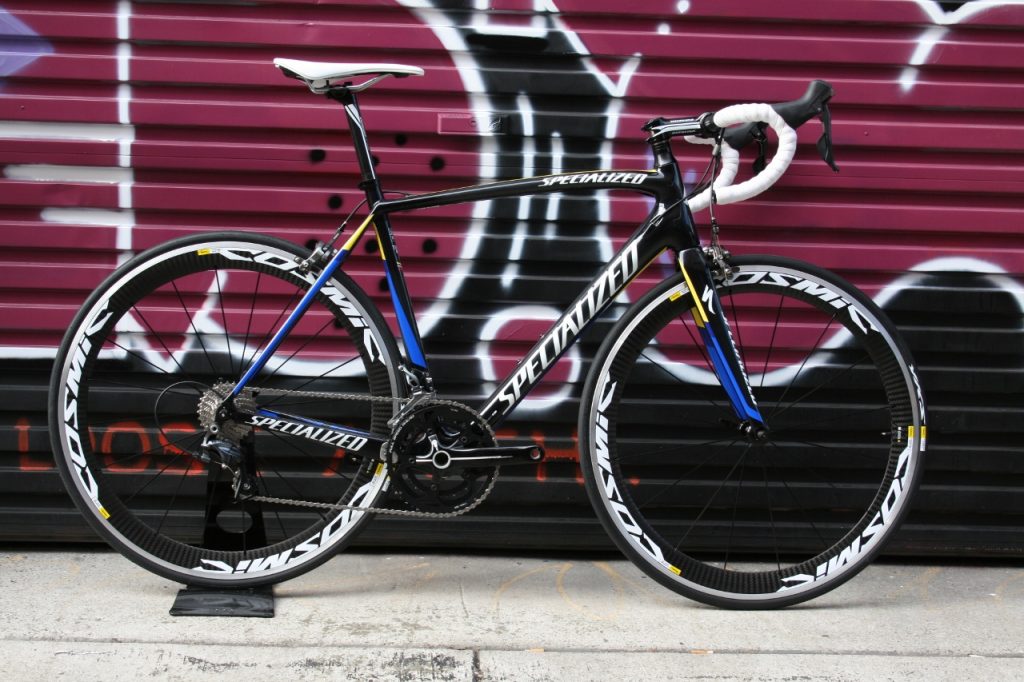
Road bikes are built for speed and are generally lighter than other bicycle types. The frames are stiffer and the rider’s position is somewhat forward leaning to reduce wind resistance. The skinny tyres are designed to reduce rolling resistance and the handlebars are intended to bring the rider in a position of maximum power output and minimum aerodynamic drag. If you are used to cycling in a more upright position, it may take you a little time to get used to riding a road bike.
Generally speaking there are two types of road bikes: competition and endurance. The differences between the two are in the frame geometry and comfort as well as the tyre clearance (distance between tyre and frame) and the type of brakes. Competition road bikes tend to have lower handlebars and higher seat posts relative to the handlebars so that the rider is leaning forward. In other words, endurance bikes tend to be more comfortable to ride because of a more upright position.
Because of UCI (international professional cycling governing body) rules around disc brakes (which have caused a lot of debate in professional cycling), this type of brake system is much more common on endurance bikes. If you’re not looking for a road bike to race you can enjoy the benefits of the superior disc brakes which are more predictable and powerful – especially in wet conditions.
Because of the desire to make road bikes ever faster, light-weight materials such as carbon fibre and titanium are often favoured over the classic aluminium and steel to make frames and components such as wheels, seat posts and handlebars. However, in our opinion there is nothing wrong with the classic materials. After all, the most important variable is the power output from your legs!
See our 2018 Road Bike Buying Guide, for a comprehensive overview of road bikes.
Road bike pros
- Built for speed – you will get from A to B faster!
- Built for distance – easier to drive forward than heavier and less aero dynamic bike types.
- Most road bikes look cool!
- Cycling culture – Australian road cycling has a strong community culture around it. If you’d like to be fit and make new friends through road cycling you don’t want be riding an old granny bike.
- Racing – competitive road racing, triathlons and group riding are a lot of fun but hard to do without a proper road bike.
Road bike cons
- Often more expensive than hybrid or commuter bikes.
- Only suitable for sealed roads.
- Can become unsafe in wet conditions because of skinny wheels with limited grip.
- Often less comfortable than other bicycles due to saddle and handlebar positioning.
- A professional bike fit is very important for injury prevention and general comfort.
Find your next road bike on Bike Chaser.
Time trial/triathlon bikes
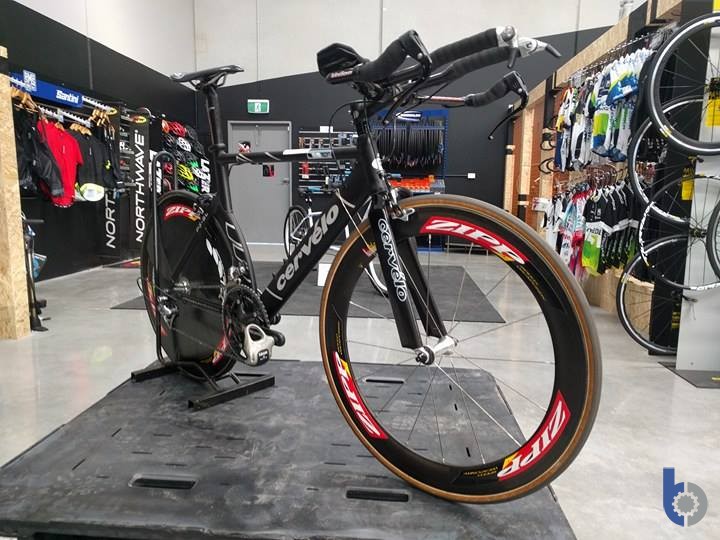
These bicycles are designed for speed and efficiency rather than comfort. The aerodynamic position on the bike gives you more speed for the same output so they are well suited for racing against the clock. In other words, they are only really suited for competition racing and not leisure riding. The low and narrow handlebars make these bikes less comfortable over longer distances. The handling is also compromised by the rider’s position, so TT bikes are best suited for solo racing (or in small groups) on straight roads where sudden movement or braking is not required.
Time trial bike pros
- Fulfil your need for speed – time trial bikes are built for a very specific purpose: speed and efficiency. It will be worth getting one of these models if you’re a serious competitor in triathlons or other solo racing events.
- Get in front in your next TT or triathlon – TT bicycles can make you a lot faster!
Time trial bike cons
- Built for speed, not comfort – the handlebar and seat positions on a time trial bike are designed to keep the rider low and compact. This position is not particularly comfortable and requires flexibility and strength in your hips, hamstrings and lower back.
- Only suitable for paved roads.
- Can become unsafe in wet conditions because of the forward-leaning position, lack of handling/mobility and skinny wheels.
- Often less comfortable than traditional race bikes due to your position on the bike.
- A professional bike fit is very important for injury prevention and optimal power output.
See our selection of time trial bikes.
Mountain bikes
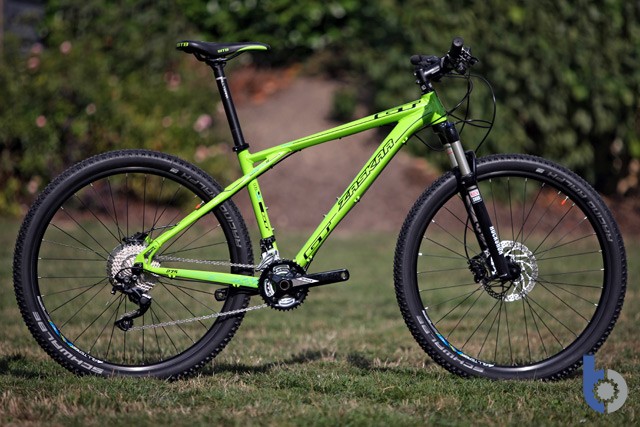
A mountain bike (MTB) is your true all-purpose bicycle. They often come with shock absorption (single or dual suspension) and sturdy brakes to handle dirt trails, mud, rocks, branches, roots, holes and other obstacles. Mountain bikes will usually have lower gears (not to be confused with a lower number of gears) so they can handle very steep terrain. With these features, mountain bikes are also well-suited for riding on flat or paved terrain, but won’t be as fast as bicycles built for road racing.
There are several types of mountain bikes such as downhill, trail, cross country, dirt jump and fat bikes:
Downhill bikes: As the name suggests, these bikes are suitable for fast downhill riding – often in MTB parks that have lifts to get you to the top of the hill. Downhill MTBs are heavy and sturdy and you’ll also need to wear protective gear such as full-face helmets and body armour to protect against high-speed falls.
Trail bikes: A versatile style of MTB, which will suit the needs of most recreational mountain bike riders. Trail MTBs are not built for one type of racing but rather for all-round trail riding with a mixture of terrain, climbs and descends.
Cross-country bikes: This style allows for a faster trail ride as these bikes are typically a little lighter. Great for competitive riding.
Dirt jump bikes: Dirt jumpers typically have a lower stand-over height and more robust wheels and frames to allow jumps and tricks without getting the saddle in the way or damaging the bike. Dirt jumping is also performed on BMX or motocross style bicycles.
Fat bikes: Fat tyre bicycles are the newest kid on the block and they are a lot of fun to ride. The oversize tyres create a feeling of riding a motorbike and the exceptional traction makes it easy to ride in terrain that is normally out of limits, such as heavy sand.
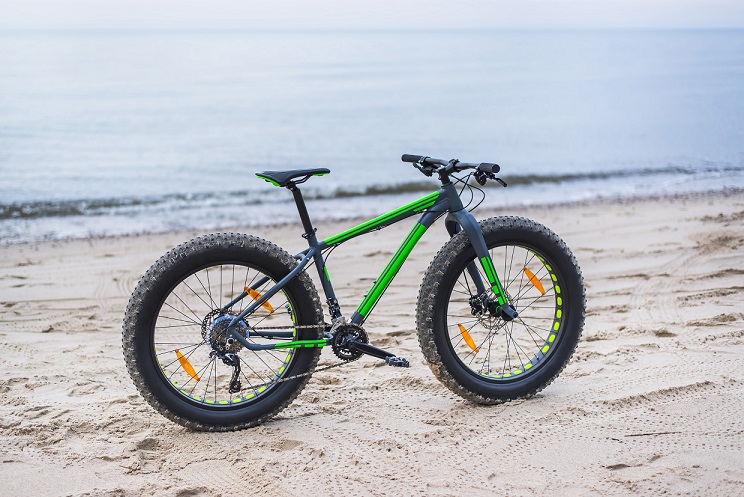
Mountain bike pros
- Suitable for most conditions – MTBs can be ridden on sealed roads as well as through most flat but uneven terrain. Relatively safe in wet conditions due to better surface grip.
- More stable than road bikes due to the thickness of the wheels.
- Relatively low risk of punctures due to thicker tyres. Note: this is highly dependent on the quality of the tyres.
- Fun to ride in rugged terrain – mountain bike riding can be a really fun and enjoyable way to enjoy nature such as forests, nature parks and hilly areas. Make sure you’re allowed to ride bikes through preserved areas.
- Racing – mountain bike racing is an Olympic sport and there are several events and clubs to join across Australia
Mountain bike cons
- Heavier and slower to ride than more slender bike types due to weight and rolling resistance.
- Requires a lot of maintenance if you’re riding in wet and muddy terrain.
- You may require protective gear such as helmets, goggles, gloves, pads for your shins, knees and elbows, if you’re riding in rugged terrain.
Find mountain bikes on Bike Chaser.
Hybrid & Commuter bikes
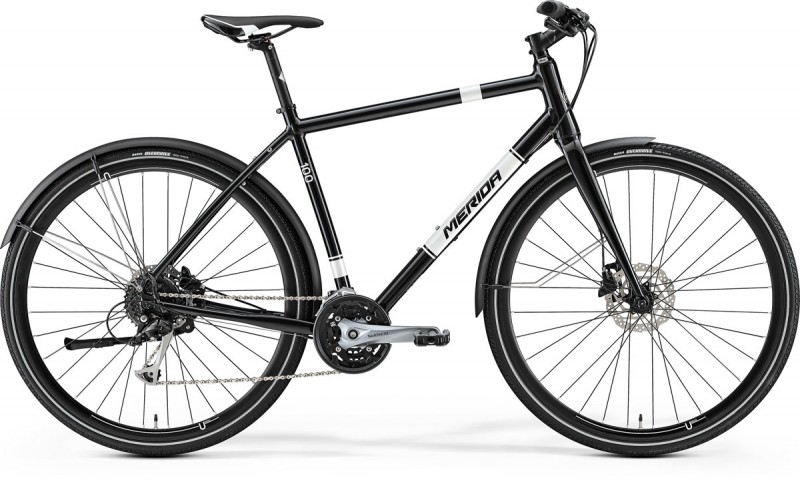
Hybrid bikes are a mix of several bicycle types and can be hard to describe. Generally they will allow for a more upright position and have slightly wider tyres than road bikes to provide a more comfortable ride. Flat handle bars, disc brakes, a comfortable saddle and a more upright riding position make hybrid bikes well suited for cycling in urban traffic. Other similar categories include flat bar road bikes, commuter bikes and urban bikes which have some differences to hybrid bikes but all fall into the category of “all-round” commuter bikes.
Hybrids are well suited for general commuting and are right for you if you’re looking for comfort and recreational riding over speed or competitive racing on road or trails.
Hybrid/Commuter bike pros
- Great commuters – hybrid bikes are well suited for riding in urban environments.
- High comfort – hybrids are suitable for people of all ages because of their upright riding position, comfort and sturdiness.
- Cheaper – entry level hybrids are often cheaper than entry level road bikes.
- Easy to attach bike racks, panniers and baskets because of the sturdy frames and parts.
Hybrid/Commuter bike cons
- Heavier and slower to ride than more slender bike types due to weight and rolling resistance.
- Not suitable for racing such as road racing, triathlons or MTB/trail racing.
Find hybrids and commuters on Bike Chaser.
BMX bicycles
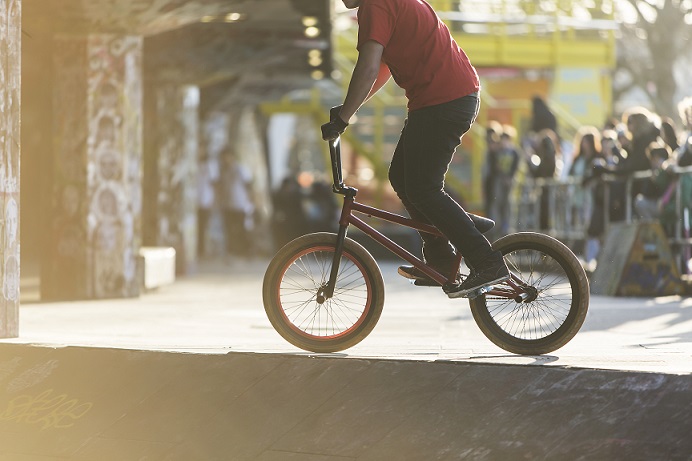
BMX is an abbreviation for Bicycle Motocross. BMX bikes are designed for jumping, motocross track racing and freestyling. The compact frames, smaller wheels (usually 20 inch) and lack of gearing means that these bikes are built for short-distance riding and sprints on dirt tracks or in skate parks. BMX bikes were the must-have bicycle for kids and teens in the early 1980s.
BMX bike pros
- Great for jumps and tricks on a BMX track or skate park.
- Hours of fun if you’re into BMX riding.
- Culture – skate parks and dirt ramps attract a lot of people with the same passion for tricks and jumps. Good friendships can be formed teaching and learning new tricks with likeminded people.
- BMX racing is a popular sport in Australia and overseas and also part of the Olympic program.
BMX bike cons
- BMX bikes are not well-suited for long distance riding such as commuting or road riding.
BMX bikes for sale on Bike Chaser.
Cruiser bikes
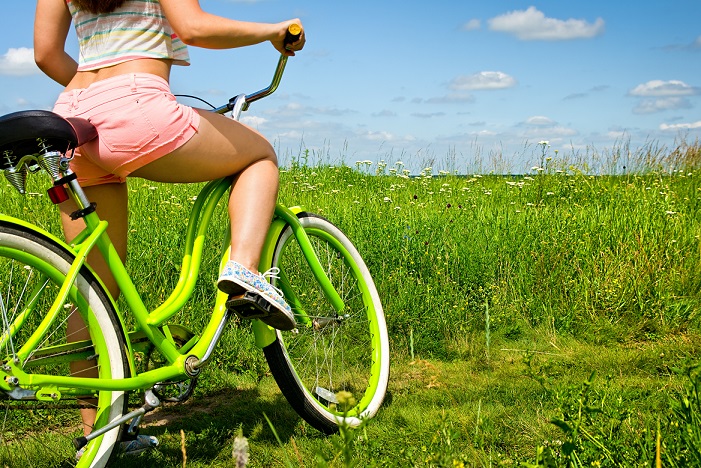
Cruisers, sometimes also referred to as retro bikes, have a comfortable upright riding position which make for a relaxed, enjoyable ride. It is easy to fit baskets and rear racks to this type of bicycle which make them great for transporting bags, groceries and smaller items. Cruiser bikes are great for trips around your local area, such as going to the shops or your local beach.
Cruiser models are relatively low maintenance and really perfect for you if you’re looking for hassle free transport within shorter distances (less than 10 kilometre radius).
Cruiser bike pros
- Comfortable and enjoyable to ride.
- Easy to fit baskets and racks which make cruisers great for transporting your shopping.
- Sturdy frames and basic gearing make these bikes easy to maintain.
- Many stylish models are available if you like that retro look.
Cruiser bike cons
- Cruisers are generally heavier and slower than most bike types.
- Front baskets do impact handling ability somewhat (especially when filled).
Find cruisers and classic/vintage bicycles on Bike Chaser.
Electric bikes
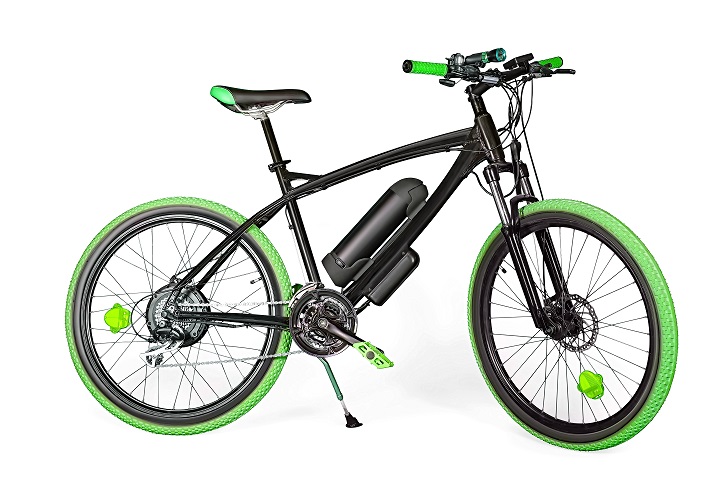
Electric or power assisted bicycles are a great way for cyclists to enjoy longer and easier rides with the help of an electrical motor. Cyclists have the option of buying purpose built e-bikes or attaching electric bike kits to their human powered rides.
The road laws in Australia stipulate that e-bike motors may only provide a maximum power output of 250 watts and only assist the cyclist up to a speed of 25 km/h after which the motor will stop providing assistance. There are more powerful motors available for off-road riding, however these are not legal to use on public roads and bike paths.
Electric bike pros
- Make it easier to ride uphill with the assistance of your electrical motor.
- Ride longer distances with the same output.
- Take a rest when you’re tired and let the motor move you forward.
- Off-road motors can go much faster than 25 km/h.
Electric bike cons
- Batteries need charging.
- Road-legal motors shut off at 25 km/h.
- E-bikes are heavier than most bicycle types due to battery, motor and frame size.
Fixies
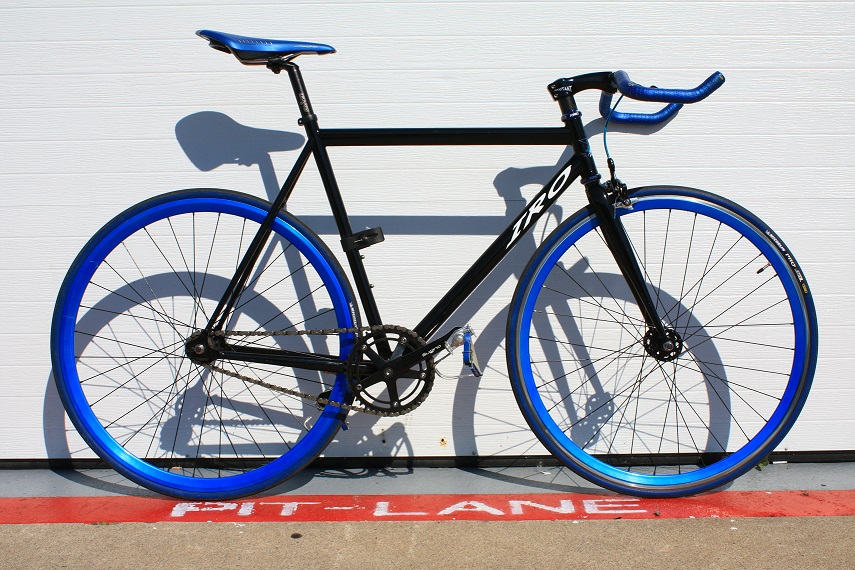
Fixed wheel bicycles or fixies are single gear bikes where the drivetrain doesn’t allow for freewheeling. While the bike is moving the pedals will also move, because the cog is fixed to the wheel. Traditionally fixies were reserved for track cycling, however in recent years these bikes have become popular for urban cycling because of their simplistic design and low maintenance.
Fixie bike pros
- Low maintenance because of the simplistic drivetrain.
- Light weight because of the reduced number of parts
Fixie bike cons
- Some fixies are brakeless which means braking entirely through applying counter-resistance through pedals or scraping your feet against the ground.
- Lack of gearing makes it harder to ride in hilly terrain.
Find fixies for sale on Bike Chaser.
5. Frame materials – does it matter?
Different frame materials tend to vary in terms of weight and cost. Generally speaking, the lighter materials tend to cost more than heavier materials.
Carbon fibre has become the popular choice for many high-end bikes because it is both lighter and stronger than steel. The quality of carbon fibre frames has improved markedly since they were first introduced, making them a really good choice for the serious cyclist. The downside: carbon frames tend to be more expensive than traditional steel and aluminium frames.
Steel is the traditional frame material, used for centuries. It will give you a comfortable, steady ride because of the strength and flex, but it is also heavier than other materials.
Aluminium frames are popular because they offer a light-weight alternative to steel at a reasonable price. Aluminium is stiffer than steel so this material will not absorb shocks and bumps as well.
Titanium is another popular material for bicycle frames as it allows for a comfortable, smooth ride akin to steel, but at a much lower weight. Titanium frames are sturdy and very long-lasting but also pricey.
The frame material can make a significant difference to your riding experience, but it is worth paying attention the quality of the components at the same time. A quality frame with cheap components will quickly give you maintenance issues, as explained later in this article.
6. How to avoid the danger of Bicycle Shaped Objects
You may have heard the term “Bicycle Shaped Object” (BSO) before. A BSO is a cheap and low quality bike which saves you money upfront but costs you more money and hassle in the long (or even short) run. I have fallen into the trap of purchasing one of these BSOs in the past and I’ll never do so again.
As a poor uni student I was pinching my pennies and I didn’t want to fork out several hundred dollars on a new bike when I could get one delivered to my front door from an online bike store for about $250. The bike worked well at first, but after a couple of months of Northern European winter it was beginning to fall apart. The cheap parts were rusting, brake cables were loose and flat tyres were frequent. In the end I had the BSO for about four months before buying a really good second hand bike with new parts, from a local dealership. Lesson learned: don’t go cheap, it’s not worth it.
At Bike Chaser we always recommend a visit to your local bike shop. They will be able to help you with the right advice and service you need to make an informed decision. Generic discount stores and department stores also sell bicycles, however most (if not all) of these products will fall into the BSO category.
7. How to get the best outcome when visiting your local bike shop
When you’re visiting bike shops, make sure you have the following three steps in mind:
- Come prepared. Have an idea of what type of bicycle you need but also do your research on components and accessories so you walk away with quality products.
- Ask and keep asking. There are no dumb questions when you’re buying from a good bike store willing to give you the advice you need. Buying a bike shouldn’t be an impulse buy but a considered decision.
- Make sure to test ride. You have to feel comfortable on your bike so it needs to be the right size and fit your body. Test more than one bike and compare.
Save yourself a lot of hassle with the right parts
Bike stores will put together their inventory to suit as many price points as possible. This generally means bikes will range from cheap bicycles with cheap components to very expensive bikes with only the very best parts and components. You may see the combination of a good frame and cheap components and think you’re getting a good deal. The problem with cheap parts is that they generally wear out quickly. For instance:
- Cheap wheels may easily get bent or lose spokes.
- Flimsy tyres will quickly wear down and you’ll continue to get punctures on a regular basis. There’s nothing worse than having to change your tube on the side of the road.
- Cheap cranks will get loose which will reduce your torque and expose you to knee and ankle injuries.
- Low quality brakes will wear and loosen to a point where they become dangerous.
I could keep going. The point is, as soon as one of these parts start to fail your bike will become less useful and in some cases, unusable until fixed. When you realise this, you will end up upgrading to better parts anyway, so you may as well do that from the start and get a good deal in the process. Bike shops are often willing to cut you a deal if you’re spending a bit in one go, so talk to them about upgrading any parts when you’re buying your bike.
Looks aren’t everything – make sure it feels right
It is important to most cyclists how their bike looks – fair enough too. I’ll easily admit that we are very susceptible the aesthetics of super cool cycling machines at Bike Chaser. There’s nothing wrong with having a cool bike – as long as it also fits your body. If the bike doesn’t feel right, don’t buy it no matter how great it looks or how good a deal you’re getting. A bicycle is a mechanical device, propelled by your body, so the two have to fit together or one of the two will break (usually the body).
Use these tips to make the most of your bike long after you buy
Once you have purchased your new dream machine, it is important to keep it in shape so you can enjoy riding for evermore. The tips below are worth keeping in mind on an ongoing basis.
Ask your local bike shop how to perform your own ongoing maintenance, such as cleaning and lubricating the drivetrain (chain, derailleurs, cranks, chain rings, cassette), keeping optimal tyre pressure and much more. Many parts are expensive to replace so it’s worth making them last as long as possible. We’d recommend that you clean your drivetrain regularly, especially if you’re riding in muddy conditions or along stretches of sandy beaches. Dirt and sand will not only make your bike inefficient, but also wear down the moving parts of your drivetrain.
Your local bike store can also perform an annual service on your bicycle to make sure gears, brakes and other moving parts are up to scratch. A general service will typically start at around $100.
We have already mentioned the importance of getting a bike fit when you get a new bike. When you have ridden your bike regularly for a couple of months, or sometimes even a couple of weeks, you will be able to assess whether your bike is fitted correctly or whether it needs further adjustments. If you start to feel discomfort it will be worth going back to your shop for an adjustment before this discomfort turns into niggling injuries.
Storing your bicycle in dry conditions will extend the lifespan of components such as the drivetrain, tyres, wheels, nuts and bolts which in turn will make your annual service a lot cheaper.
Do you have any questions we haven’t answered in this article? If so, post them in the comments section below and we will do our best to answer them.
Looking for a new bike? Find thousands of cycling products on Bike Chaser!




